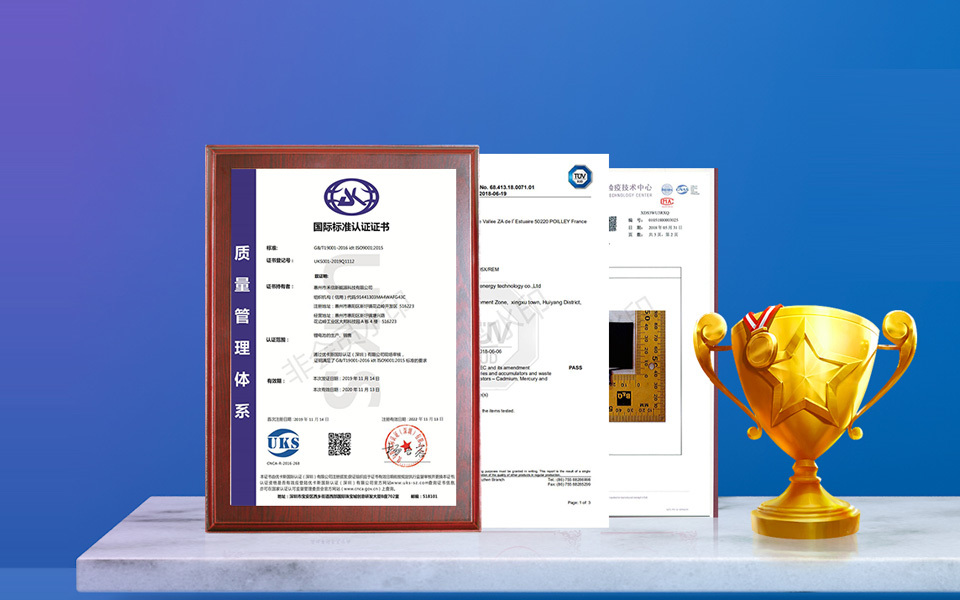11
2020
-
05
Main types of lithium-ion batteries
Author:
According to the different electrolyte materials used in lithium-ion batteries, lithium-ion batteries are divided into liquid lithium-ion batteries (Liquified Lithium-Ion Battery, referred to as LIB) and polymer lithium-ion batteries (Polymer Lithium-Ion Battery, referred to as PLB).
Lithium-ion battery (Li--ion)
Rechargeable lithium-ion batteries are currently the most widely used batteries in modern digital products such as mobile phones and laptops. However, they are relatively delicate and should not be overcharged or overdischarged during use (the battery will be damaged or scrapped). Therefore, there are protective components or protective circuits on the battery to prevent expensive battery damage. Lithium-ion battery charging requirements are very high, and the termination voltage accuracy must be ensured within ±1%. Major semiconductor device manufacturers have developed a variety of lithium-ion battery charging ICs to ensure safe, reliable, and fast charging.
Mobile phones basically use lithium-ion batteries. Proper use of lithium-ion batteries is very important to extend battery life. It can be made into flat rectangular, cylindrical, rectangular and button-type according to the requirements of different electronic products, and has a battery pack composed of several batteries connected in series and parallel. The rated voltage of lithium-ion batteries, due to changes in materials, is generally 3.7V, and the positive electrode of lithium iron phosphate (hereinafter referred to as iron phosphate) is 3.2V. The termination charging voltage when fully charged is generally 4.2V and 3.65V for phosphorus iron. The terminal discharge voltage of lithium-ion batteries is 2.75V ~ 3.0V (the battery factory gives the operating voltage range or the terminal discharge voltage, each parameter is slightly different, generally 3.0V, phosphorus iron is 2.5V). Continuing to discharge below 2.5V (phosphorus iron 2.0V) is called over-discharge. Over-discharge will damage the battery.
Lithium-ion batteries with lithium cobalt oxide type materials as the positive electrode are not suitable for high-current discharge. Excessive current discharge will reduce the discharge time (higher internal temperatures will be generated and energy will be lost), and may be dangerous; but lithium iron phosphate The cathode material lithium battery can be charged and discharged with a high current of 20C or more (C is the capacity of the battery, such as C=800mAh, a 1C charging rate means the charging current is 800mA), and is particularly suitable for electric vehicles. Therefore, the maximum discharge current given by the battery production factory should be less than the maximum discharge current during use. Lithium-ion batteries have certain temperature requirements. The factory provides charging temperature ranges, discharge temperature ranges and storage temperature ranges. Overvoltage charging will cause permanent damage to lithium-ion batteries. Lithium-ion battery charging current should be based on the battery manufacturer's recommendations and requires a current-limiting circuit to avoid overcurrent (overheating). The commonly used charging rate is 0.25C~1C. When charging with high current, it is often necessary to detect the battery temperature to prevent overheating from damaging the battery or causing explosion.
Lithium-ion battery charging is divided into two stages: constant current charging first, and changing to constant voltage charging when it is close to the end voltage. For example, a battery with a capacity of 800mAh has a charge termination voltage of 4.2V. The battery is charged at a constant current of 800mA (charge rate 1C). At the beginning, the battery voltage increases at a large slope. When the battery voltage is close to 4.2V, it is changed to 4.2V constant voltage charging. The current gradually decreases and the voltage changes little. When the charging current drops to 1/10-50C (the settings vary from factory to manufacturer and does not affect use), it is considered to be nearly full and charging can be terminated (some chargers start the timer after reaching 1/10C. After a certain period of time, end charging).
Previous Page
Next Page
Previous Page
Next Page
21
2020-04
21
2020-04
The lithium battery industry can still expect high growth in the next few years
21
2020-04
Decoding the pros and cons of overseas Taobao for Chinese lithium battery companies
21
2020-04
Where is the energy storage battery?
21
2020-04
More than 5 power battery companies are involved in upstream lithium mines
11
2020-05
Warmly celebrate our company's successful passing of ISO9001 quality management system certification
11
2020-05
Super battery/graphene battery is not the best yet. Take stock of 12 new battery technologies

Copyright©Huizhou Hexin New Energy Technology Co., Ltd. All Rights Reserved


